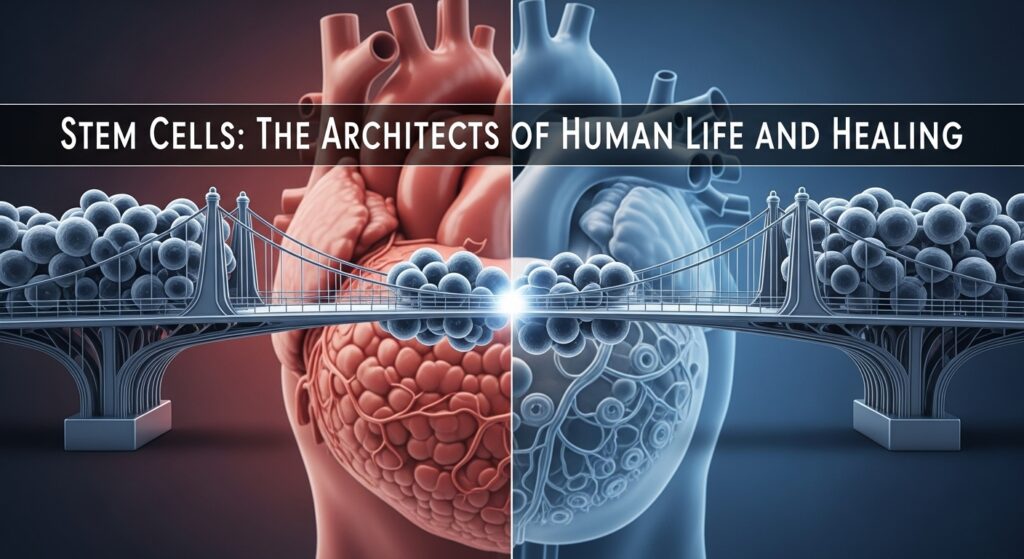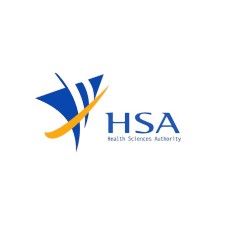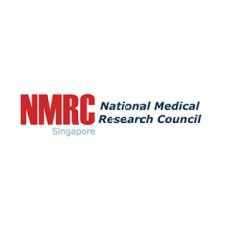NEWS
Bridging Care, Building Trust

Stem Cells: The Architects of Human Life and Healing
Your Complete Guide to Biology’s Most Revolutionary Discovery
1. The Essence of Stem Cells: Your Body’s Master Builders
Stem cells are the foundational raw materials of the human body – unique cells with two superpowers:
- Self-Renewal: Ability to replicate indefinitely while staying “young.”
- Differentiation: Capacity to transform into specialized cells (heart cells, neurons, blood cells, etc.).
Think of them as:
“Biological blank canvases that can become anything your body needs to repair or regenerate.”
2. The Hierarchy of Potency: From Omnipotence to Specialization
Not all stem cells are equally versatile. They’re classified by their developmental potential:
Type | Capabilities | Real-World Example |
Totipotent | Can form a complete organism + placenta | Fertilized egg (days 0-4) |
Pluripotent | Can form any body cell (200+ types) | Embryonic stem cells (ESCs) |
Multipotent | Can form multiple cell types in one lineage | Bone marrow stem cells (blood/immune cells) |
Oligopotent | Forms few related cell types | Vascular stem cells (arteries/veins) |
Unipotent | Produces one cell type only | Muscle satellite cells |
3. Where Do We Get Them? Key Biological Sources
Stem cells exist throughout your lifespan in specialized niches:
A. Embryonic Stem Cells (ESCs)
- Source: Inner cell mass of 5-day blastocysts
- Significance: Pure pluripotency for research
- Ethical Status: Restricted globally; not used clinically
B. Adult (Somatic) Stem Cells
- Bone Marrow: Produces blood cells (HSCs) and repair cells (MSCs)
- Adipose Tissue: Rich in MSCs (500x more than bone marrow)
- Dental Pulp: Neural crest-derived stem cells
- Niche Populations: Skin, liver, brain
C. Perinatal Stem Cells
- Umbilical Cord Blood: Rich in HSCs and MSCs
- Wharton’s Jelly: Prime MSC source with high proliferation rate
- Placenta: Immunomodulatory stem cells
D. Lab-Created: Induced Pluripotent Stem Cells (iPSCs)
- Breakthrough: Shinya Yamanaka’s 2012 Nobel Prize-winning technique
- Process: Reprogram adult skin/blood cells to ESC-like state
- Potential: Patient-specific disease modeling
4. Why Are They Biologically Unique? The Healing Mechanisms
Stem cells orchestrate healing through sophisticated biological strategies:
Mechanism | How It Works | Clinical Application |
Differentiation | Directly replaces damaged cells | Cartilage repair in osteoarthritis |
Paracrine Signaling | Secretes growth factors (VEGF, BDNF, IGF-1) | Heart muscle regeneration post-infarction |
Immunomodulation | Suppresses harmful inflammation (TNF-α, IL-6) | Crohn’s disease, Multiple Sclerosis |
Exosome Release | Delivers regenerative microRNAs | Non-cell-based anti-aging therapies |
5. Real-World Medical Applications: Beyond Theory
FDA/EMA-Approved Therapies:
- Hematopoietic Transplants: Cured >1M blood cancer patients since 1968
- Corneal Repair: Limbal stem cells restore vision (Holoclar®)
- Skin Grafts: Epidermal stem cells for burn victims
Emerging Evidence-Based Uses:
- Orthopedics: Adipose-derived MSCs regenerate cartilage (82% success in knee OA)
- Neurology: Neural stem cells improve motor function in Parkinson’s trials
- Autoimmunity: UC-MSCs induce remission in 87.5% of Crohn’s patients
- Cardiology: MSC injections reduce scar size after heart attacks
Cutting-Edge Frontiers:
- Organoids: Mini-brains/livers for drug testing
- CRISPR-iPSCs: Correcting genetic defects in cystic fibrosis
- 3D Bioprinting: Creating transplantable tissues
6. Safety and Ethics: Navigating Complex Realities
Safety Considerations:
- Tumor Risk: Undifferentiated iPSCs/ESCs may form teratomas
- Immunogenicity: Allogeneic cells may trigger rejection
- Administration Risks: Site reactions, embolism with improper injection
Ethical Frameworks:
- Embryonic Research: Strict regulations (14-day embryo rule)
- Informed Consent: Critical for perinatal tissue donation
- Commercialization: Debates on tissue ownership/profiteering
MediBridge Protocol: We use only adult autologous or ethically sourced allogeneic MSCs – zero embryonic materials.
7. The Future Is Now: 2025-2030 Breakthroughs
- Off-the-Shelf Allogeneic Therapies: Banked MSCs for instant access
- Exosome Therapeutics: Cell-free regenerative “nanomedicine”
- AI-Driven Personalization: Algorithms predicting optimal cell doses
- Gene-Edited iPSCs: Correcting mutations before transplantation
Why This Matters to You
Whether you’re seeking treatment for arthritis, autoimmune disease, or simply pursuing longevity – understanding stem cells empowers you to:
- Evaluate clinics wisely (demand proof of cell sourcing)
- Discern science from hype (avoid “miracle cure” claims)
- Access tomorrow’s medicine today through ethical medical tourism
“Stem cells aren’t science fiction – they’re the most natural healing system we possess. Harnessing them ethically is medicine’s greatest frontier.”
– Dr. Elena Rodriguez, ISSCR President (2025)
Ready to Begin Your Healthcare Journey?
Get a free consultation with our medical experts to
discuss your treatment options






